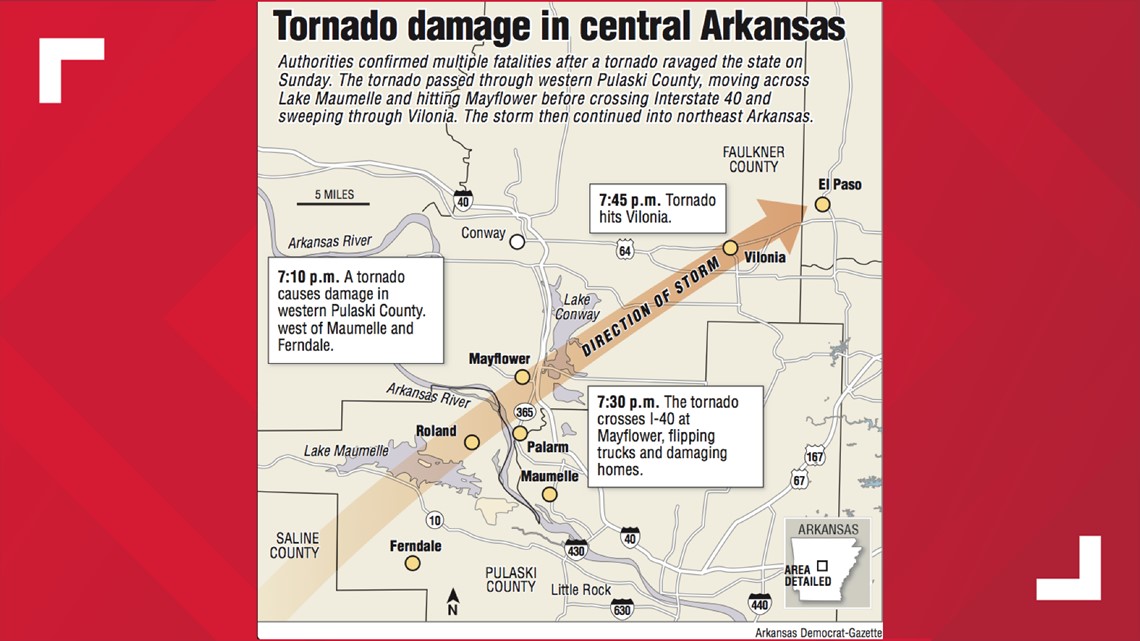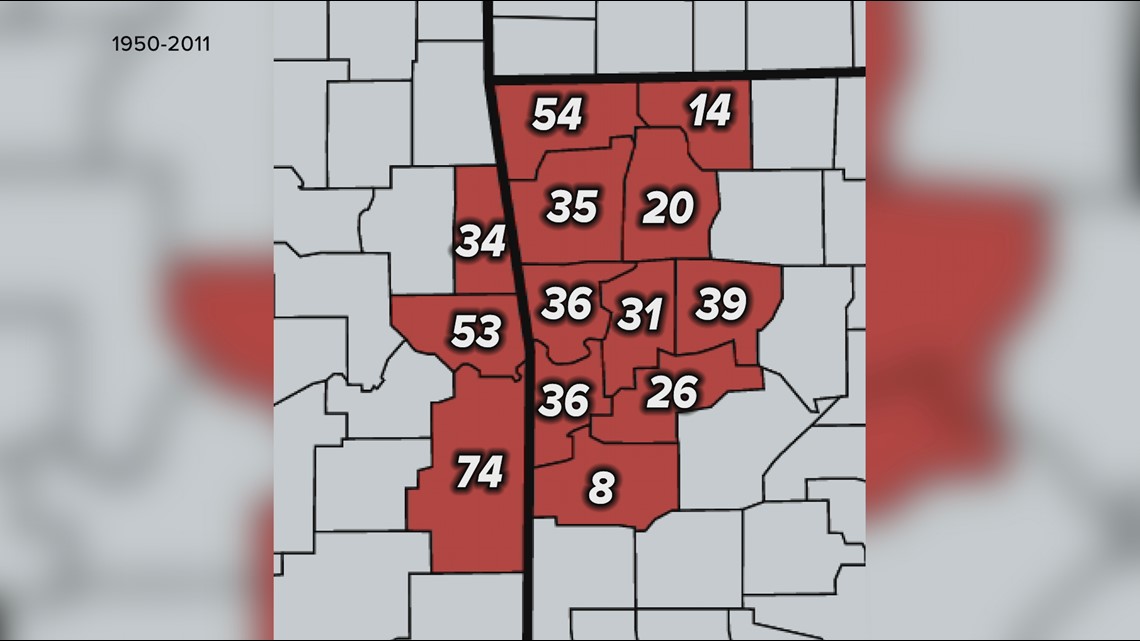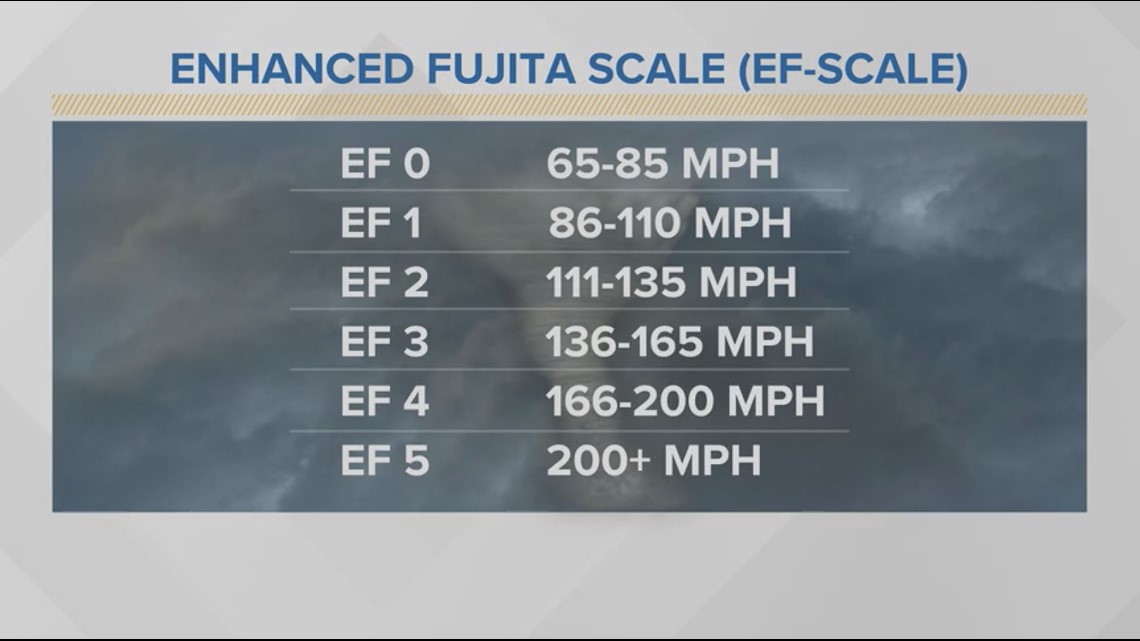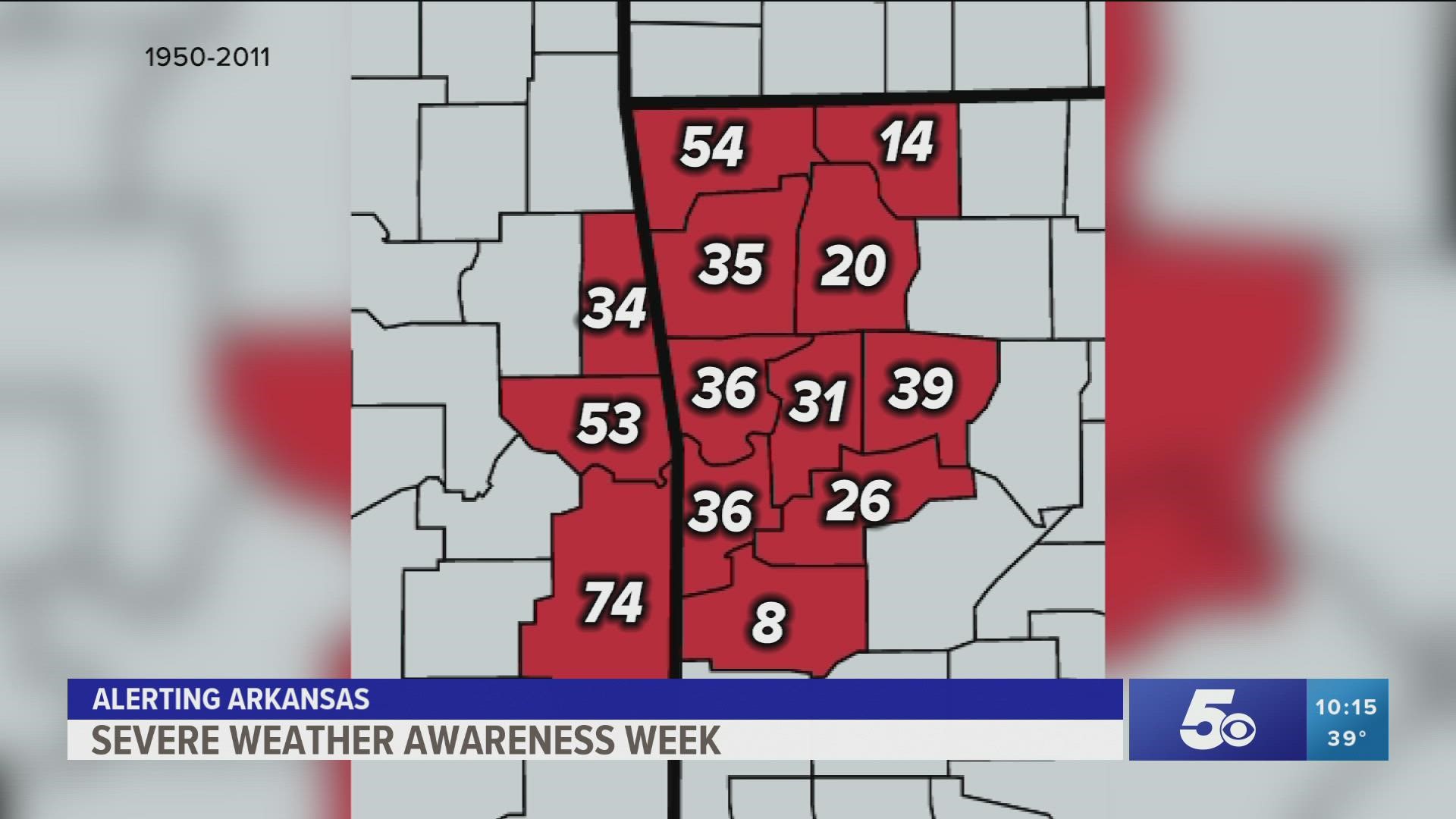ARKANSAS, USA — Arkansas is no stranger when it comes to tornadoes. On average, the Natural State sees around 30 tornadoes each year. A tornado is considered one of nature’s most destructive storms. The most powerful tornadoes can tear down buildings, throw cars in the air, or even lift houses off their foundations.
There are many myths and questions about tornadoes that happen in NW Arkansas and the River Valley, so let’s answer a few to help you stay alert this severe weather season.
#1 Let’s start with a big MYTH: Can tornadoes cross rivers and mountains?
The answer is simple, YES! Tornadoes can develop at any time and any place, if the conditions are favorable. Tornadoes are driven by a very strong circulation that is very high up in the atmosphere, usually around 15000-30000ft, and what the terrain is like at the ground, including the Ozarks which is around 2500 ft high, doesn’t stop them from forming or even slow them down.
The most recent example of a tornado crossing the mountains and a river in Arkansas was the 2014 Mayflower/Vilonia tornado. It ended up crossing over the Ozarks in western Pulaski County, Lake Maumelle, the Arkansas River, and Lake Conway without missing a beat, as it tracked 41 miles across three different countries.


So, yes tornadoes certainly can and will move over mountains, rivers, and lakes without slowing down.
#2 Why does it seem like most tornadoes hit Arkansas during the nighttime?
It seems like we see more thunderstorms and tornadoes after dark, but in fact .. according to the National Weather Service... most of the tornadoes that have happened in NW Arkansas and the River Valley have occurred during daylight hours based on tornado records from 1950 to 2022. In fact, 67% of confirmed tornadoes happened between 9am-9pm and then 48% from 3pm to 9pm.


The reason we have more activity after dark than other locations further west is likely tied to the fact that severe thunderstorms often develop during the heat of the day, which is in the mid/late afternoon hours when the capping inversion is the weakest. Thunderstorms that develop in the mid/late afternoon hours must travel across much of Oklahoma to reach Arkansas, and if they develop far enough west, that will result in them moving into western Arkansas after dark and the more likely tornadic ingredients may not be in place any longer.
So, if these storms do produce tornadoes, they’re typically on the weak side and very short-lived... so that explains why there aren’t a lot of EF-3 or higher tornadoes reported in our area.
#3 Who has the most tornadoes in NW Arkansas and the River Valley and why?
The county who has had the most tornadoes reported is Leflore county, while Benton county falls second.


#4 Last but not least, how are tornadoes rated?


Tornadoes come in all different shapes and sizes and it’s not a simple and easy process to rate a tornado. The only way to determine the strength of the tornado is through damage assessments. The NWS categorizes tornadoes by a number rating, from zero to five, after accessing the damage.
Tornadoes are ranked using the Enhanced Fujita (EF) Scale, which is an updated version of the original Fujita Tornado Scale developed by T. Theordore Fujita, Ph.D. The EF scale takes into account more variables than the original F scale did when assigning a wind speed rating to a tornado.
The EF scale incorporates 28 damage indicators, known as DIs, which includes the building type, structures, and trees. For each damage indicator, there are 8 degrees of damage, known as DODs, ranging from the beginning of visible damage to complete destruction of the damage indictor.
The most important thing to note with the EF scale is that a tornado’s assigned rating is strictly an estimate based on the damage that was associated with the tornado.
- 5NEWS Meteorologist Michelle Trotter
ALERTING ARKANSAS
Spring 2022 Severe Weather Outlook

